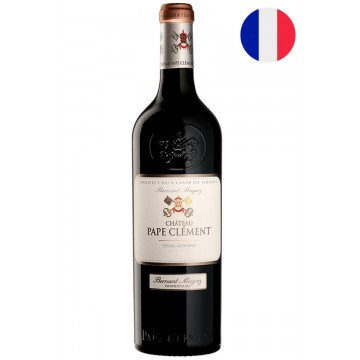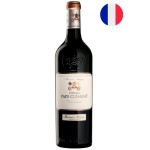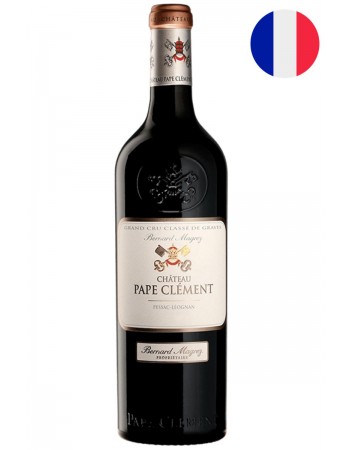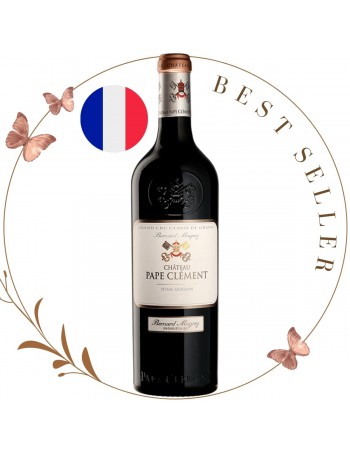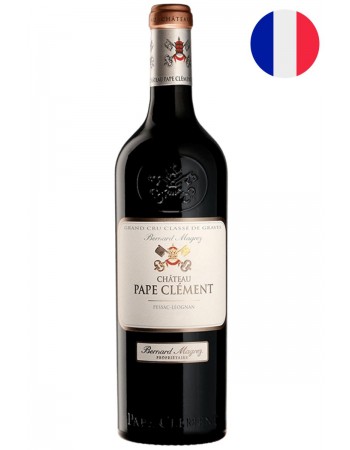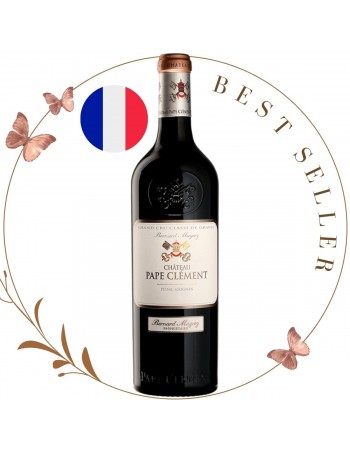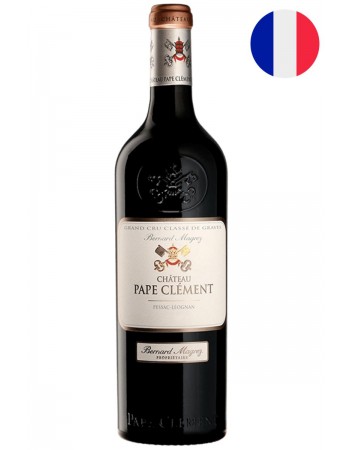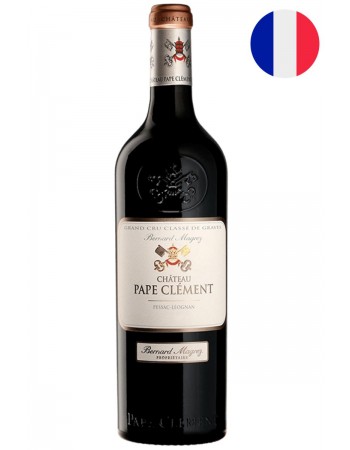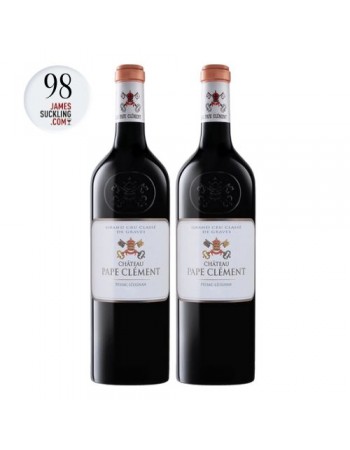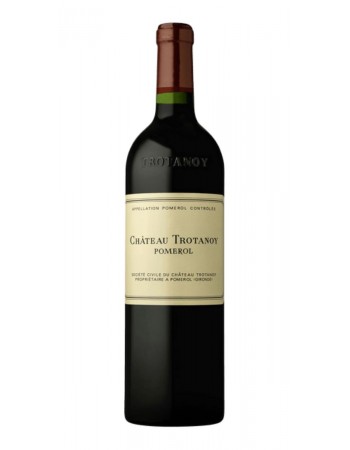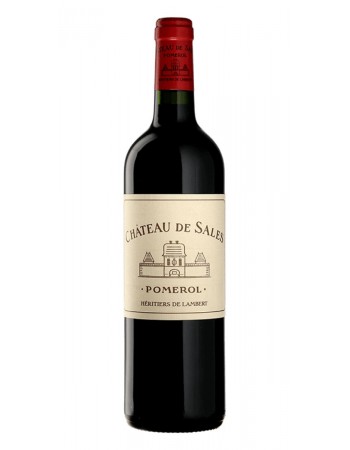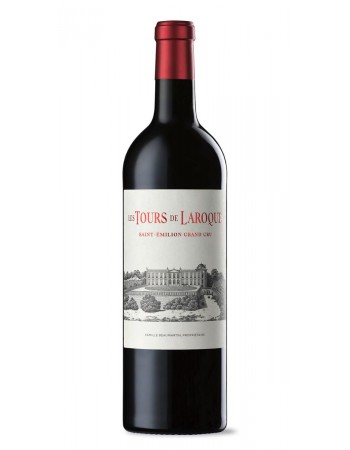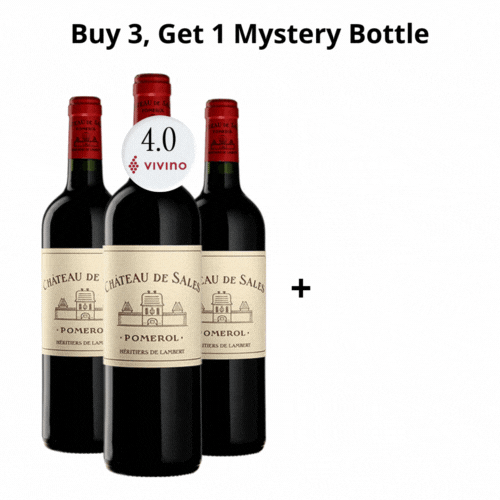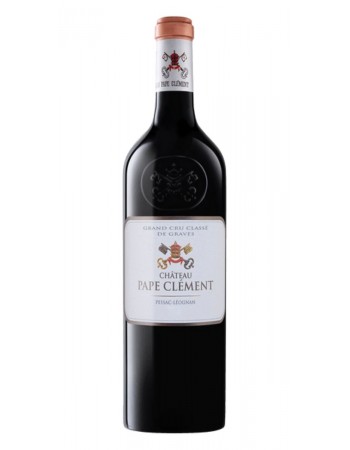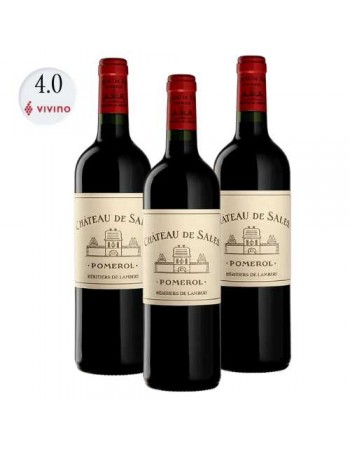2009 Chateau Pape Clement
-
S$37297
-
- 2+ for S$36997 each

Vintage: 2009
Region: Pessac Leognan
Country: France
Winemaker Notes
Owner Bernard Magrez has made serious investments here since the late 1990's and recent vintages have been outstanding thanks to extremely low yields, labourintensive sorting of grapes and modern wine-making techniques. Prices are moving up at Pape Clément but so is the quality, which bears no relation at all to the weedy wines of the early 1980's and before. The 2009 looks like Vintage Port. This is thick and unctuous, jam-packed with fruit. There is a lovely sweetness on the palate and although this is a powerhouse it is not over-done. Inky with Impressive depth and still typical of its origins despite the high level of winemaking. A huge wine. The one thing that it lacks is charm.
About Winery
Origins
Chateau Pape Clément owes its name to its most illustrious owner. A man of the cloth born in 1264, Bertrand de Goth became Bishop of Comminges, in the Pyrenees Mountains, at the age of 31; he later became Archbishop of Bordeaux in 1299.
He then received as a gift the property in Pessac, the Vineyard de La Mothe. Taken by a passion for the vine, he continually took part personally in equipping, organizing and managing the domain in accordance with the most modern and rational practices. Nevertheless, on 5 June 1305 the cardinals met in a conclave in Pérouse and appointed him to succeed Pope Benedict XI, who had passed away prematurely after only eleven months of reign. Bertrand de Goth took the name of Clement V.
Supported by Philip IV, it was he who decided in 1309 to move the papal court to Avignon, thus breaking with Rome and its battles of influence. During this same period, the weight of his responsibilities led him to relinquish his property, giving it to the Archbishop of Bordeaux. Henceforward, the vineyard was to be known to posterity under the name of this enlightened pope.
The early period
Management under the clergy brings modernity The grateful Church perpetuated Pope Clement's work. Each archbishop in turn turned to modernity and technical progress, to the point of the wine estate becoming a model vineyard. In addition to especially early harvests, which remain one of its special characteristics, Chateau Pape Clément is without a doubt the first vineyard in France to align vine stock to facilitate labour.
After the Revolution
At the end of the 18th century, the Archbishop of Bordeaux was dispossessed of his property. The papal vineyard became part of the public domain.
The 20th century
8 June 1937 was a dark day in the vineyard's history, when a violent hailstorm destroyed virtually the entirety of the estate. Two years later, Paul Montagne bought it and gradually brought it back to life. Thanks to his efforts, the vineyard returned to its former rank and stood up to the surge in urbanization. His descendents, Léo Montagne and Bernard Magrez, perpetuate this secular tradition so that Chateau Pape Clément wines continue to delight the wine-lovers of today and tomorrow.
Winemaker Notes
Owner Bernard Magrez has made serious investments here since the late 1990's and recent vintages have been outstanding thanks to extremely low yields, labourintensive sorting of grapes and modern wine-making techniques. Prices are moving up at Pape Clément but so is the quality, which bears no relation at all to the weedy wines of the early 1980's and before. The 2009 looks like Vintage Port. This is thick and unctuous, jam-packed with fruit. There is a lovely sweetness on the palate and although this is a powerhouse it is not over-done. Inky with Impressive depth and still typical of its origins despite the high level of winemaking. A huge wine. The one thing that it lacks is charm.
About Winery
Origins
Chateau Pape Clément owes its name to its most illustrious owner. A man of the cloth born in 1264, Bertrand de Goth became Bishop of Comminges, in the Pyrenees Mountains, at the age of 31; he later became Archbishop of Bordeaux in 1299.
He then received as a gift the property in Pessac, the Vineyard de La Mothe. Taken by a passion for the vine, he continually took part personally in equipping, organizing and managing the domain in accordance with the most modern and rational practices. Nevertheless, on 5 June 1305 the cardinals met in a conclave in Pérouse and appointed him to succeed Pope Benedict XI, who had passed away prematurely after only eleven months of reign. Bertrand de Goth took the name of Clement V.
Supported by Philip IV, it was he who decided in 1309 to move the papal court to Avignon, thus breaking with Rome and its battles of influence. During this same period, the weight of his responsibilities led him to relinquish his property, giving it to the Archbishop of Bordeaux. Henceforward, the vineyard was to be known to posterity under the name of this enlightened pope.
The early period
Management under the clergy brings modernity The grateful Church perpetuated Pope Clement's work. Each archbishop in turn turned to modernity and technical progress, to the point of the wine estate becoming a model vineyard. In addition to especially early harvests, which remain one of its special characteristics, Chateau Pape Clément is without a doubt the first vineyard in France to align vine stock to facilitate labour.
After the Revolution
At the end of the 18th century, the Archbishop of Bordeaux was dispossessed of his property. The papal vineyard became part of the public domain.
The 20th century
8 June 1937 was a dark day in the vineyard's history, when a violent hailstorm destroyed virtually the entirety of the estate. Two years later, Paul Montagne bought it and gradually brought it back to life. Thanks to his efforts, the vineyard returned to its former rank and stood up to the surge in urbanization. His descendents, Léo Montagne and Bernard Magrez, perpetuate this secular tradition so that Chateau Pape Clément wines continue to delight the wine-lovers of today and tomorrow.
99 points Robert Parker's Wine Advocate
 Medium to deep garnet colored, the 2009 Pape Clement struts flamboyantly out of the glass, featuring beautifully opulent preserved black fruits, Morello cherries and Chinese five spice with underlying notions of truffles, iron ore and tobacco plus a waft of sandalwood. Full-bodied, the voluptuous fruit has a firm foundation of super ripe, grainy tannins and bags of freshness supporting layer upon layer of black fruit, exotic spices and earth-laced flavors, finishing very long. (LPB)
Medium to deep garnet colored, the 2009 Pape Clement struts flamboyantly out of the glass, featuring beautifully opulent preserved black fruits, Morello cherries and Chinese five spice with underlying notions of truffles, iron ore and tobacco plus a waft of sandalwood. Full-bodied, the voluptuous fruit has a firm foundation of super ripe, grainy tannins and bags of freshness supporting layer upon layer of black fruit, exotic spices and earth-laced flavors, finishing very long. (LPB)  (3/2019)
(3/2019)
98 points James Suckling
 Wonderful aromas of plums and blueberries and flowers. Full-bodied with plums, stones, hazelnuts and milk chocolate, and a long, long finish. Marvelous. Best ever.
Wonderful aromas of plums and blueberries and flowers. Full-bodied with plums, stones, hazelnuts and milk chocolate, and a long, long finish. Marvelous. Best ever.  (8/2012)
(8/2012)
96 points Jeb Dunnuck
 Continuing to drink beautifully (my last bottle was a handful of years ago), the 2009 Château Pape Clément offers mature notes of blackcurrants, chocolate, cedar pencil, and loamy earth. It shows the ripe, sexy style of the vintage, yet most of its baby fat has melted away and it's showing a beautiful sense of elegance as well as classic Graves smoky, tobacco, and earthy aromas and flavors. Enjoy this beautiful, elegant wine any time over the coming 25+ years.
Continuing to drink beautifully (my last bottle was a handful of years ago), the 2009 Château Pape Clément offers mature notes of blackcurrants, chocolate, cedar pencil, and loamy earth. It shows the ripe, sexy style of the vintage, yet most of its baby fat has melted away and it's showing a beautiful sense of elegance as well as classic Graves smoky, tobacco, and earthy aromas and flavors. Enjoy this beautiful, elegant wine any time over the coming 25+ years.  (11/2020)
(11/2020)
95 points Decanter
 An early-ripening and generous wine in an early-ripening and generous year, this is full of the exuberance that it demonstrated when young. The terroir is starting to exert its influence now, with a lovely pull back on the finish as the tannins step up. It's still youthful and buttoned down but the fruit is exotically ripe and really starting to come into its prime, with traces of heavy black pepper spice. Extremely good quality, if vintage led. (JA)
An early-ripening and generous wine in an early-ripening and generous year, this is full of the exuberance that it demonstrated when young. The terroir is starting to exert its influence now, with a lovely pull back on the finish as the tannins step up. It's still youthful and buttoned down but the fruit is exotically ripe and really starting to come into its prime, with traces of heavy black pepper spice. Extremely good quality, if vintage led. (JA)  (2/2019)
(2/2019)
95 points Wine Enthusiast
 This is a richly structured wine with beautiful perfumes emanating from the bouquet. The rich, stalky texture is balanced by the flavors of dark chocolate and black currant jelly. It's big, ripe and full of potential, a fine balance between opulence and ageworthiness. *Cellar Selection* (RV)
This is a richly structured wine with beautiful perfumes emanating from the bouquet. The rich, stalky texture is balanced by the flavors of dark chocolate and black currant jelly. It's big, ripe and full of potential, a fine balance between opulence and ageworthiness. *Cellar Selection* (RV)  (9/2012)
(9/2012)

